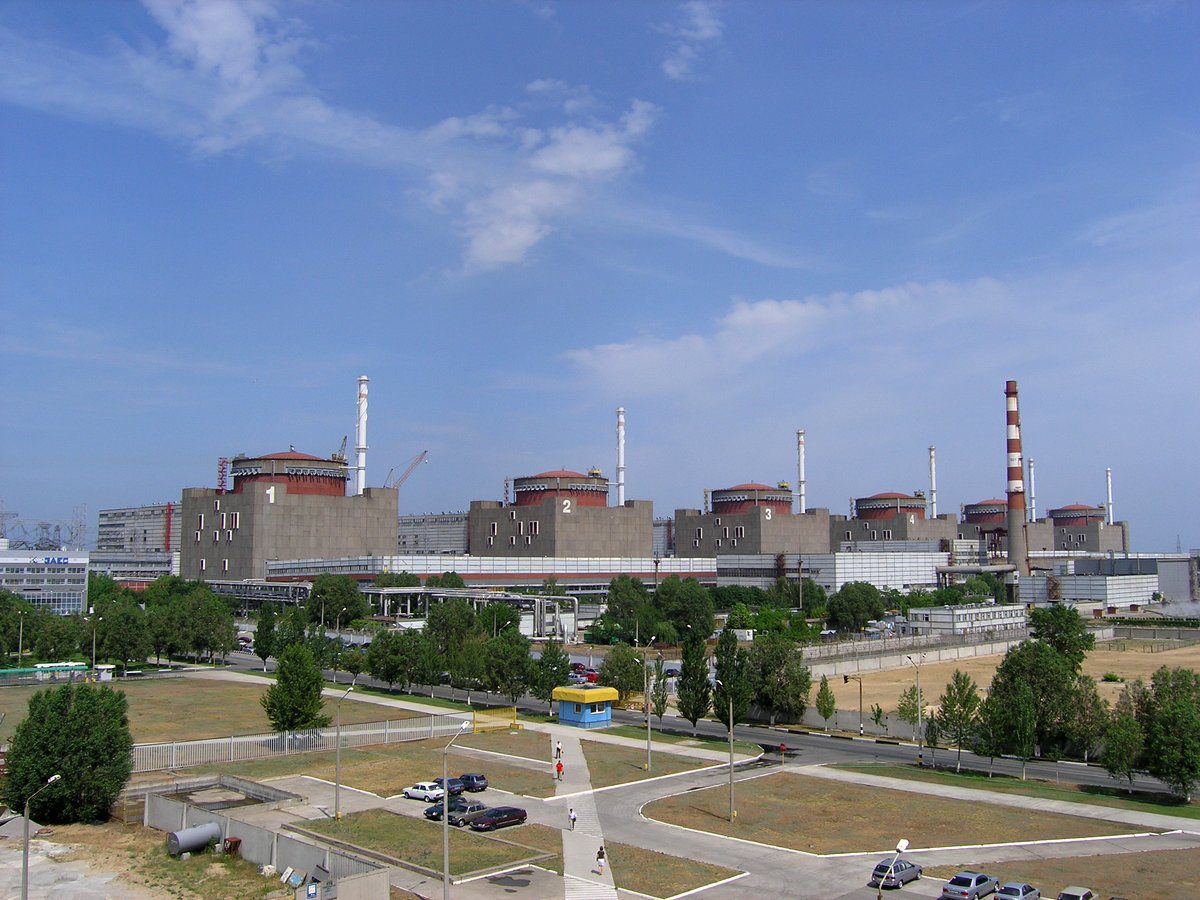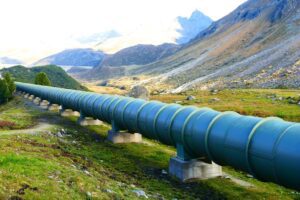In its most recent update on the status of Ukrainian nuclear power plants (NPPs), issued to the International Atomic Energy Agency (IAEA) on March 2, the State Nuclear Regulatory Inspectorate of Ukraine (SNRIU) said it maintained communications with the country’s NPPs and that all units “continued to operate as before.”
Of Ukraine’s 15 reactors, more than half were operating at full capacity, while others were undergoing scheduled maintenance or being held in reserve, the SNRIU said. The Organisation for Economic Co-operation and Development’s Nuclear Energy Agency (NEA) reports that nine reactors were connected to the grid in Ukraine on Feb. 28. It also says the electricity grid in Ukraine is operating in an “island mode,” that is, not connected to any neighboring countries’ grids. The NEA said a test of this mode was already underway at the beginning of February 2022, prior to Russian forces invading Ukraine.
Ukraine is heavily dependent on nuclear energy, with its reactors providing more than half (53.59%) of the country’s electricity in 2020—the most recent data available from the International Energy Agency (IEA). The Zaporizhzhya NPP (Figure 1), which has six 1,000-MW units, is the largest nuclear power plant in Europe. It is located in the “steppe zone” of Ukraine, a natural grassland plain in the southern part of the country, and is an important energy resource for the region.

Nuclear Terrorism
On March 2, Russia informed the IAEA that its military forces took control of the territory around the Zaporizhzhya facility. The same day, Energoatom, operator of all the Ukrainian NPPs, reported that “the Russian military is explicitly terrorizing employees of the [Zaporizhzhya] power plant and residents of its satellite city Energodar.”
At a meeting of the IAEA Board of Governors on Wednesday in Vienna, Austria, Yevhen Tsymbalyuk, Ukraine’s representative, appealed to the group “to take decisive measures to prevent Russian troops from entering the 30-kilometer zone around Ukraine’s nuclear power plants.” He also asked the IAEA to put “pressure on Russia to immediately liberate the Chernobyl zone and return control of all nuclear facilities to the Ukrainian side.”
The Chernobyl site (Figure 2), located in northern Ukraine near the country’s border with Belarus, was taken over by Russian forces very soon after the invasion began. The IAEA reported on Feb. 24 that armed forces had “taken control of all facilities of the State Specialized Enterprise Chernobyl NPP, located within the Exclusion Zone.” The agency said there had been “no casualties nor destruction at the industrial site,” but it was following the situation “with grave concern.”

During the meeting in Vienna, Ukraine also called on the IAEA “to impose sanctions on Russia’s nuclear technologies and conduct an international audit of their nuclear stockpiles.” The IAEA said on March 2 that Director General Rafael Mariano Grossi has “repeatedly stressed that any military or other action that could threaten the safety or security of Ukraine’s nuclear power plants must be avoided.” He also said that “operating staff must be able to fulfil their safety and security duties and have the capacity to make decisions free of undue pressure.”
On March 3, Energoatom issued a press release calling the Chernobyl seizure by Russian troops “nuclear terrorism.” Ukraine asked the IAEA to “call upon NATO to close access to the airspace over Ukraine’s nuclear facilities and to intensify the efforts to prevent any act of nuclear terrorism.”
According to Energoatom, Chernobyl personnel “have been detained by the Russian military without rotation for the seven days, are subjected to psychological pressure and moral exhaustion, and as a result, have limited opportunities to communicate, move and continue fulfilling the full scope of repair and maintenance, which causes disruption of the radiological regime and endangers their lives and health.”
In a March 1 statement issued by the IAEA, Grossi expressed his “deep admiration and sincere gratitude for the tireless work, vigilance and bravery of the personnel operating the nuclear power plants, other nuclear facilities, and the staff of the regulator. We can all be very thankful for their determined and courageous efforts to ensure continued nuclear safety and security.”
In a joint address signed by Ukraine’s Minister of Energy Herman Galushchenko, the Head of the State Inspectorate for Nuclear Regulation Oleg Korikov, and the Head of Energoatom Petro Kotin, the trio said, “While informing the IAEA of the safety and security status of nuclear facilities in the context of hostilities, we expect the concrete joint efforts to be taken on the IAEA’s side in the form of ‘peer pressure’ typically applied by the IAEA Member Countries against the parties who evade from prioritizing safety.”
Radioactive Waste Disposal Facilities Hit
SNRIU reported on Feb. 26 that an electrical transformer at a radioactive waste disposal facility run by the state-specialized enterprise Radon near the northeastern city Kharkiv had been damaged, but there were no reports of radioactive release. The following day, the SNRIU informed the IAEA that missiles had hit another of Radon’s radioactive waste disposal facilities, this time in the capital of Kyiv. There was no damage to the building reported, but radiation monitoring systems were taken out of service for a period of time, presumably due to the shelling. The systems were restored by the following morning and there were no reports of a radioactive release.
The sites in question reportedly do not contain high-level radioactive waste, but rather, disused radioactive sources and other low-level waste from hospitals and industry. Nonetheless, Grossi expressed his concern following the events in a statement that said, “These two incidents highlight the very real risk that facilities with radioactive material will suffer damage during the conflict, with potentially severe consequences for human health and the environment.”
SNRIU on March 1 said that all of Radon’s radioactive waste disposal facilities were operating as usual, and the radiation monitoring systems did not indicate any deviations from normal values. The World Association of Nuclear Operators (WANO), a non-profit organization “with safety as the only goal,” issued a statement on March 2 encouraging all parties to maintain “the physical integrity of the facilities” and continue “effective on-site and off-site radiation monitoring systems and emergency preparedness and response measures,” among other things.
In a statement issued on March 3, the American Nuclear Society (ANS) appealed “to all armed combatants in Ukraine,” asking them to “refrain from military actions near nuclear facilities.” ANS President Steven Nesbit, and Executive Director and CEO Craig Piercy, said, “The staff of Ukraine’s nuclear power plants must be able to fulfill their duties without interruption, undue pressure, or the fear of being killed or injured. We also urge the securing of off-site power supplies for every nuclear facility, uninterrupted transportation to and from sites for plant workers and supply chains; and unfettered communications with regulators and inspectors. Ukraine’s nuclear workers need their rest between shifts, access to their homes, and a peace of mind that their loved ones are safe.”
Updates provided by the IAEA and Energoatom to date have not referenced any issues at other operating Ukrainian NPPs, which are the four-unit Rivne NPP and two-unit Khmelnytskyi NPP, both located in western Ukraine, and the three-unit South-Ukraine NPP, located about 175 miles west of the Zaporizhzhya station. The South-Ukraine NPP is part of a larger Electric Power Producing Complex (EPPC) that also includes the Olexandrivska hydroelectric power plant and the Tashlyk pumped-storage facility.
—Aaron Larson is POWER’s executive editor (@AaronL_Power, @POWERmagazine).








